Starting with a long distance race on Thursday – and continuing with a middle distance on Saturday and a relay on Sunday – the World’s best orienteers will gather in Kuopio, Finland to compete for the final time on the international scene this season. The terrain looks amazing as always in this region of Finland, and all top athletes (see list of top competing athletes ordered by World Ranking at the bottom) plan to be on the start line – a total of 300 athletes from 32 nations.
This year’s World Cup final is organized from Thursday September 26th until Sunday September 29th, and has extra importance for the athletes as it also serves as a pre-WOC for next year’s World Orienteering Championships. With two races to go, the battle for the overall World Cup is still open in both the men’s and women’s classes, although Kasper Fosser (Norway) and Simona Aebersold (Switzerland) have relatively large leads.
The races will be broadcast live on national TV-stations in Norway, Sweden, Finland and France, and races can also be followed on IOF TV (25 EUR for all races) with English and German commentary. There will also be available free live GPS-tracking and live results. See more details on how to follow the races in the “Links & Live” section below.
Program
- Thursday, September 26th: Long distance
- TV Broadcast: 11:30 – 15:30
- Men’s First Start: 08:29
- Women’s First Start: 08:56
- Saturday, September 28th: Middle distance
- TV Broadcast: 11:30 – 15:00
- Women’s First Start: 08:40
- Men’s First Start: 09:25
- Sunday, September 29th: Relay
- TV Broadcast: 09:50 – 14:00
- Men’s Start: 09:59
- Women’s Start: 12:02
All times are CET – local times are + one hour
Links & Live
- Orienteering.sports live page for World Cup final 2024 – here you will find links to webTV-broadcast, GPS-tracking and live results.
- Bulletin 4 – detailed information
- IOF Eventor webpage for the event
- World Cup 2024 web-page
- World of O results archive which includes both World Cup, EOC and WOC
Race details
Whereabouts
Following this link (and included as a screenshot below) you can find where the World Cup Final 2024 is organized (northeastern marked area in the below map) compared to the WOC 2025 areas (WOC 2025 Middle Q to the north, WOC 2025 Middle Final and Long to the southwest and Relay close to the Kuopio city center).
Terrain
The terrain-description is the same for all three races:
Land forms: The total height difference is less than 100m, and there are no steep slopes or high cliffs. The terrain includes challenging detailed areas and places where there are just a few features to navigate.
Stones: Stone density is generalized to make the map readable for modern orienteering.
Vegetation: Pine trees dominate the landscape. Vegetation in the lower parts of the terrain is usually dense in the late summer and fall.
Runnability: The area has a basic structure of economic forests causing changes in runnability. Runnability varies.
Visibility: The area has a basic structure of economic forests causing changes in visibility.
Track density: There are only few tracks, forest roads and signs of forestry machine.
Old maps
Below the four old maps from the area are shown.
Long distance race details
- Long distance with the start interval 3 minutes for the best ranked 40 competitors in competition and 2 minutes for all others.
- Course planner Jarmo Puttonen
- Women 11.7 km, 290 m climb, 23 controls
- Men 14.5 km, 370 climb, 25 controls
- Expected winning times 88 minutes
Middle distance race details
- Middle distance with start interval 2 minutes
- Course planner Marko Uotila
- Women 4.5 km, 185 m climb, 16 controls
- Men 5.5 km, 220 climb, 20 controls
- Expected winning time 32 minutes
Relay race details
- Course planner Olli-Jussi Korpinen
- Women 4.7-4.9 km, 135 m climb, 13-15 controls
- Men 5.5-5.6 km, 155 climb, 15-17 controls
- Expected winning times women 34/102 min, men 33 min/99
World Cup standings
The individual World Cup consist of seven competition. The total score is the sum of the scores of each competition. That means there are still 200 points to battle for – and all points won will count towards the overall.
Men
| 25/05 | 26/05 | 01/06 | 17/08 | 18/08 | 26/09 | 28/09 | Total | |||
| 1 | Kasper Harlem Fosser | 22 | 12 | 100 | 80 | 100 | 314 | |||
| 2 | Martin Regborn | 50 | 60 | 80 | 18 | 29 | 237 | |||
| 3 | Emil Svensk | 22 | 100 | 0 | 40 | 50 | 212 | |||
| 4 | Daniel Hubmann | 24 | 28 | 33 | 33 | 80 | 198 | |||
| 5 | Eirik Langedal Breivik | 22 | 40 | 9 | 100 | 23 | 194 | |||
| 6 | Joey Hadorn | 100 | 17 | 10 | 30 | 33 | 190 | |||
| 7 | Tomas Krivda | 10 | 31 | 60 | 50 | 16 | 167 | |||
| 8 | Tuomas Heikkila | 60 | 80 | 13 | 153 | |||||
| 9 | Jonatan Gustafsson | 80 | 50 | 9 | 139 | |||||
| 10 | Miika Kirmula | 22 | 0 | 40 | 0 | 60 | 122 | |||
| 10 | Fabian Aebersold | 31 | 21 | 25 | 0 | 45 | 122 | |||
| 12 | Riccardo Rancan | 33 | 13 | 25 | 21 | 25 | 117 | |||
| 13 | Tino Polsini | 16 | 30 | 45 | 25 | 116 | ||||
| 14 | Teemu Oksanen | 40 | 10 | 26 | 0 | 17 | 93 | |||
| 15 | Albin Ridefelt | 60 | 28 | 88 | ||||||
| 16 | Tim Robertson | 10 | 17 | 37 | 15 | 7 | 86 | |||
| 17 | Timo Suter | 45 | 24 | 2 | 4 | 8 | 83 | |||
| 18 | Yannick Michiels | 0 | 45 | 35 | 0 | 80 | ||||
| 19 | Akseli Ruohola | 0 | 33 | 23 | 22 | 78 | ||||
| 20 | Loic Capbern | 31 | 0 | 0 | 45 | 0 | 76 |
Women
In the women’s World Cup rankings, Simona Aebersold (SUI) is leading with a strong chance to top the overall World Cup this year. She has already won two races and finished second in three, giving her 440 points. Her closest competitor, Natalia Gemperle, also from Switzerland, has 370 points. Tove Alexandersson (SWE), who has dominated by winning the World Cup for the last nine years, is currently third with 337 points. There’s a big drop in points after the top three, with Andrine Benjaminsen (NOR) in fourth place having over 100 points less. Hanna Lundberg (SWE) and Venla Harju (FIN) are right behind her in fifth and sixth places.
| 25/05 | 26/05 | 01/06 | 17/08 | 18/08 | 26/09 | 28/09 | Total | |||
| 1 | Simona Aebersold | 80 | 80 | 100 | 100 | 80 | 440 | |||
| 2 | Natalia Gemperle | 60 | 100 | 80 | 80 | 50 | 370 | |||
| 3 | Tove Alexandersson | 100 | 37 | 50 | 50 | 100 | 337 | |||
| 4 | Andrine Benjaminsen | 40 | 35 | 33 | 60 | 60 | 228 | |||
| 5 | Hanna Lundberg | 37 | 45 | 27 | 31 | 33 | 173 | |||
| 6 | Venla Harju | 28 | 18 | 40 | 35 | 35 | 156 | |||
| 7 | Victoria Haestad Bjornstad | 50 | 15 | 45 | 17 | 21 | 148 | |||
| 8 | Evely Kaasiku | 24 | 7 | 37 | 24 | 45 | 137 | |||
| 9 | Cecile Calandry | 31 | 40 | 7 | 33 | 24 | 135 | |||
| 10 | Tereza Rauturier | 0 | 60 | 20 | 23 | 28 | 131 | |||
| 11 | Maija Sianoja | 22 | 13 | 31 | 25 | 27 | 118 | |||
| 12 | Alva Sonesson | 29 | 33 | 3 | 20 | 25 | 110 | |||
| 13 | Aleksandra Hornik | 22 | 50 | 35 | 0 | 107 | ||||
| 13 | Ida Agervig Kristiansson | 45 | 30 | 18 | 0 | 14 | 107 | |||
| 15 | Marie Olaussen | 0 | 24 | 5 | 37 | 37 | 103 | |||
| 16 | Paula Gross | 22 | 18 | 12 | 45 | 0 | 97 | |||
| 17 | Karolin Ohlsson | 2 | 28 | 28 | 22 | 16 | 96 | |||
| 18 | Rita Maramarosi | 22 | 15 | 29 | 9 | 15 | 90 | |||
| 19 | Josefin Tjernlund | 37 | 24 | 19 | 80 | |||||
| 20 | Ines Berger | 16 | 0 | 12 | 40 | 10 | 78 |
Team
The teams World Cup is defined as the sum of all scores from both relay and individual competitions according to the following principle:
- Individual races: The sum of the four best runners per team (nation), both Men and Women
- Relay: The individual scoring * 10
- Sprint Relay: The individual scoring * 20
| Total | |||
| 1 | Switzerland | 3455 | |
| 2 | Norway | 3296 | |
| 3 | Sweden | 3073 | |
| 4 | Finland | 1919 | |
| 5 | France | 1382 | |
| 6 | Czechia | 1303 | |
| 7 | Hungary | 927 | |
| 8 | Denmark | 884 | |
| 9 | Great Britain | 810 | |
| 10 | Austria | 781 | |
| 11 | Latvia | 685 | |
| 12 | Estonia | 682 | |
| 13 | Germany | 672 | |
| 14 | Poland | 599 | |
| 15 | Ukraine | 518 | |
| 16 | Bulgaria | 500 | |
| 17 | New Zealand | 425 | |
| 18 | Italy | 419 | |
| 19 | Spain | 365 | |
| 20 | Slovakia | 361 |
Top starters – sorted by World Ranking position
Men
| WRE pos sprint |
WRE pos | Name | Country | WRE ID |
| 5 | 1 | Kasper Harlem Fosser | 23855 | |
| 10 | 2 | Matthias Kyburz | 12305 | |
| 3 | 3 | Emil Svensk | 16905 | |
| 554 | 4 | Olli Ojanaho | 19846 | |
| 11 | 5 | Joey Hadorn | 23033 | |
| 16 | 5 | Daniel Hubmann | 10849 | |
| 20 | 7 | Gustav Bergman | 7562 | |
| 805 | 8 | Albin Ridefelt | 15472 | |
| 25 | 9 | Jannis Bonek | 23784 | |
| 17 | 10 | Miika Kirmula | 11767 | |
| 9 | 11 | Tomas Krivda | 28597 | |
| 49 | 12 | Ruslan Glibov | 9910 | |
| 1 | 14 | Martin Regborn | 15387 | |
| 1379 | 15 | Lucas Basset | 7403 | |
| – | 16 | Viktor Svensk | 33940 | |
| 1382 | 17 | Anton Johansson | 20161 | |
| – | 18 | Simon Imark | 22867 | |
| 39 | 19 | Eirik Langedal Breivik | 32770 | |
| 45 | 20 | Martin Hubmann | 10851 | |
| 807 | 22 | Lukas Liland | 27350 | |
| 109 | 24 | Milos Nykodym | 14322 | |
| 35 | 24 | Havard Sandstad Eidsmo | 33052 | |
| 28 | 26 | Fabian Aebersold | 32449 | |
| 39 | 27 | Max Peter Bejmer | 7466 | |
| 19 | 28 | Loic Capbern | 8188 |
Women
| WRE pos sprint |
WRE pos | Name | Country | WRE ID |
| 1 | 1 | Tove Alexandersson | 65 | |
| 2 | 2 | Simona Aebersold | 23032 | |
| 19 | 3 | Andrine Benjaminsen | 396 | |
| 3 | 4 | Natalia Gemperle | 6259 | |
| 6 | 6 | Hanna Lundberg | 37614 | |
| 11 | 7 | Tereza Rauturier | 28127 | |
| 43 | 8 | Marie Olaussen | 4291 | |
| 10 | 11 | Venla Harju | 4150 | |
| – | 12 | Johanna Ridefelt | 21094 | |
| – | 13 | Sanna Fast | 22905 | |
| 25 | 14 | Karolin Ohlsson | 4277 | |
| 7 | 16 | Megan Carter Davies | 844 | |
| 32 | 17 | Ane Dyrkorn | 26755 | |
| 18 | 18 | Sandra Grosberga | 1865 | |
| 63 | 19 | Marika Teini | 5868 | |
| 12 | 20 | Evely Kaasiku | 2672 | |
| 403 | 21 | Marion Aebi | 23 | |
| 17 | 22 | Maija Sianoja | 5370 | |
| 78 | 23 | Miia Niittynen | 4161 | |
| 33 | 26 | Paula Gross | 18906 | |
| 55 | 28 | Ingrid Lundanes | 25248 | |
| 894 | 28 | Elin Svantesson | 4057 | |
| 296 | 30 | Tereza Smelikova | 24934 |
 World of O News
World of O News

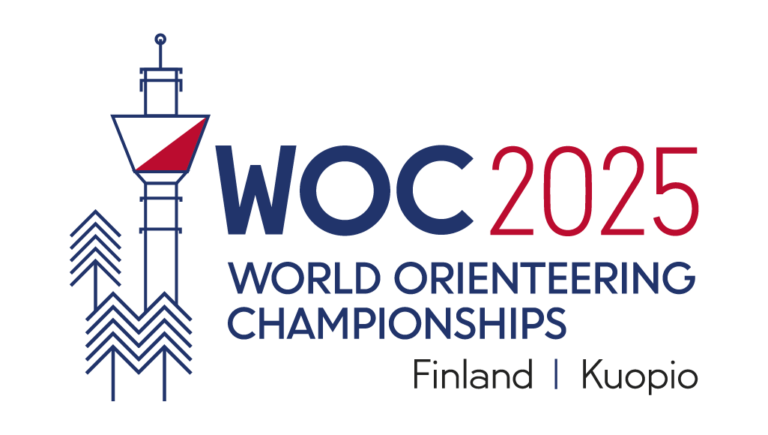


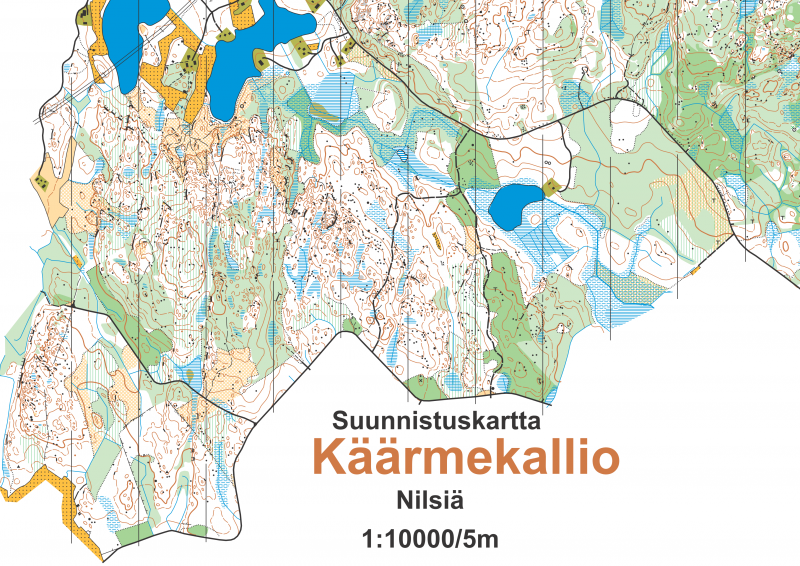
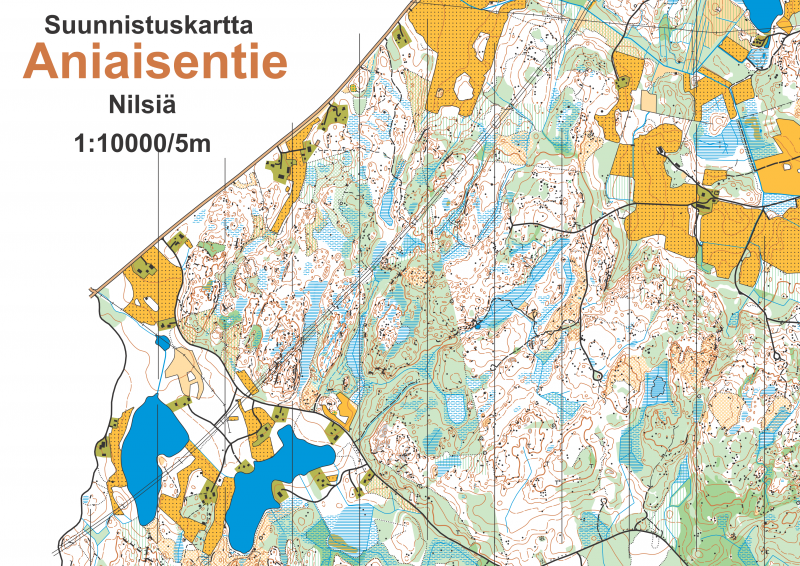
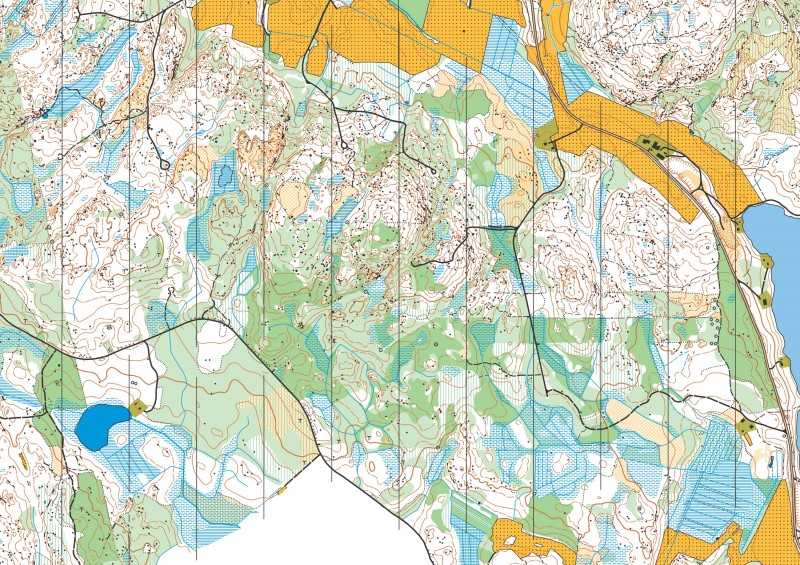
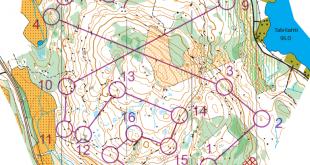
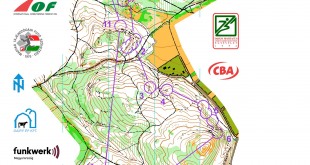
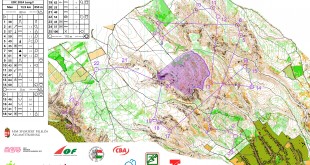
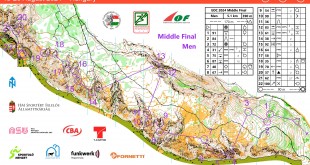
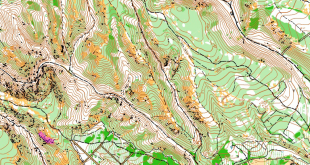
Some reflections about this last world cup for the season and EOC in Hungary earlier – to estimate winning times seems to have become a complicated rocket science with very low resolution. And while I have bigger understanding for the way too long winning times at EOC – more unpredictable terrain, fewer athletes just below the ones actually competing for Hungary for testing, and extremely hot weather conditions, I have very hard to understand the miscalculations during these world cup final races.
Long men: 8 minutes below estimated winning time, with 20 (!) men beating estimated winning time.
Long women: 15 minutes (!) below estimated winning time, with 14 (!) women beating estimated winning time.
Middle men: 3 minutes below estimated winning time, with 16 (!) men beating estimated winning time.
Middle women: 3,5 minutes below estimated winning time, with 14 (!) men beating estimated winning time.
There must have been hundreds of orienteering races in similar terrain in this area just in the last few years, Finland has a lot of competent runners just below the level of the national team to try the courses out, and no extreme weather conditions.
It’s just a mystery to me, the miscalculations…
And a question about todays race – do you really have to supply drinks during a middle distance around 5 km in 8 degrees temperature? And if so, do you really have to serve it at a control, with 4 people standing up around a big table, with one of them wearing a signal red coat that is spotted hundred meters from the actual control point?